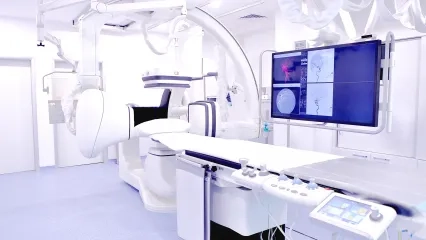Press Coverage: cnnturk.com | yenicaggazetesi.com | milliyet.com | gunes.com | star.com | haberler.com | gazetevatan.com | penceretv.com
Alo Yeditepe
Alo Yeditepe
What Do Suspicious Mammography Results Mean?
Mammography, whose importance in the early diagnosis of breast cancer is understood day by day, is an examination that should be made for every woman after the age of 40. Yeditepe University Kozyatağı Hospital Radiology Specialist Assoc. Prof. Dr. Filiz Çelebi pointed out that with mammography, precursor lesions of breast cancer could be caught almost 2 years ago.
Early diagnosis nowadays brings a very high rate of treatment success for many cancers. Breast cancer is at the forefront of these. Yeditepe University Kozyatağı Hospital Radiology Specialist Assoc. Prof. Dr. Filiz Çelebi, who pointed out that treatment success in breast cancer treatment can be up to 90 percent today thanks to screening and early diagnosis, gave information about screening and diagnostic mammography.
Yeditepe University Kozyatağı Hospital Radiology Specialist Assoc. Prof. Dr. Filiz Çelebi stated that the screening mammography was performed to investigate the possible cancerous cell without any signs or complaints and that if a suspicious image is detected with the images, the woman is recalled for detailed evaluation. Explaining that the women, who were called back for a detailed assessment, were very worried and afraid about this situation, Assoc. Prof. Dr. Filiz Çelebi said, "There is no need to worry about this. When we look at the statistics, less than 1in 10 women we call back for detailed imaging and tests are diagnosed with breast cancer." Assoc. Prof. Dr. Filiz Çelebi, who spoke that the main point for both screening and diagnostic mammography is not to waste time, said, "It does not necessarily mean that there are some symptoms in the breast after the screening. Mammography for screening purposes usually takes 10-15 minutes. In mammography performed for diagnostic purposes, the duration is slightly longer because the suspicious areas are evaluated in more detail. Ultrasonography may be needed along with mammography to make a diagnosis in patients with dense breast tissue and when there are lesions that cannot be clearly evaluated on mammography. Your doctor may also recommend an MRI examination for additional examination in cases where the suspected lesion in the breast cannot be diagnosed only by mammography and ultrasound, or for screening in cases with a family history of breast cancer."
The Level of Pain Can Vary from Person to Person
Reminding that many women delay mammography because it is a painful procedure, Assoc. Prof. Dr. Filiz Çelebi emphasized that this approach is extremely dangerous and can delay the diagnosis of breast cancer by causing a loss of time. Stating that the pain felt during the procedure also varies according to the pain threshold of the person, Dr. Filiz Çelebi continued: "The level of pain may vary depending on whether the mammogram is taken before the menstrual period, personal pain tolerance, and how the person is positioned during the procedure. Mammography should be preferred after the end of the menstrual cycle to avoid pain and sensitivity.
Accurate Diagnosis Requires Biopsy
Yeditepe University Kozyatağı Hospital Radiology Specialist Assoc. Prof. Dr. Filiz Çelebi, who pointed out that breast cancers can be diagnosed largely early in mammography performed once a year after the age of 40, concluded by warning that "when a suspicious lesion is seen in the breast with imaging methods, imaging-guided biopsy should be performed for the definitive diagnosis of cancer".
This content was prepared by Yeditepe University Hospitals Medical Editorial Board.
Alo Yeditepe


